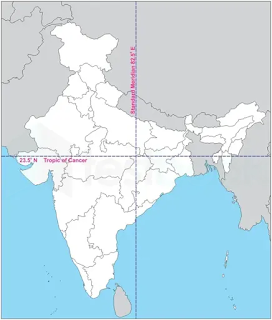The concept of the Prime Meridian is one of the most important reference points in the field of geography and navigation. It is the line of 0° longitude that divides the Earth into the Eastern and Western hemispheres and serves as a basis for measuring both distance and time. The idea of a Prime Meridian has existed since ancient times, with different cultures proposing their own meridians as the basis for their maps and navigation systems.
However, the need for a standardized Prime Meridian became increasingly important as global exploration and trade expanded in the modern era. Different countries were using different meridians as their standards, leading to confusion and inefficiency. In 1884, an international conference was held in Washington D.C. to address this issue and establish a universally recognized Prime Meridian.
The conference, known as the International Meridian Conference, was attended by representatives from 25 nations and resulted in the adoption of the Greenwich meridian as the Prime Meridian. This decision was based on the scientific and practical advantages of using the already-established observatory at Greenwich, England, and its proximity to other major observatories in Europe. It was also supported by the dominant global powers of the time, such as Britain and the United States.
However, despite the adoption of the Greenwich meridian, there were still several countries that continued to use their own standards, either out of tradition or practicality. India was one such country, and it needed a standard meridian that would meet its unique geographic and political needs. In this article, we will explore the selection of 82.30' as the standard meridian in India and the factors that led to its adoption.
Historical Context
The need for a standard meridian in India arose in the late 19th century, when the British colonial administration began to modernize the country's infrastructure and communication systems. Prior to this, different regions in India used their own local meridians, which made it difficult to establish a consistent system of timekeeping and transportation. The British government recognized the importance of a standardized meridian for the efficient functioning of railways, telegraph lines, and other communication networks.
In 1866, the government established the Great Trigonometrical Survey of India, with the aim of creating accurate maps and measuring the topography of the country. The survey was led by Sir Andrew Waugh, who was appointed the Surveyor General of India in 1861. One of Waugh's priorities was to determine a standard meridian for India, based on scientific and practical considerations.
Over the next two decades, several meridians were proposed and evaluated. One of the main contenders was the Allahabad meridian, which was located at 81°14' East of Greenwich. This meridian had been used by the East India Company for its maps and surveys, and had also been proposed by the Indian astronomer and mathematician, Radhanath Sikdar.
However, Waugh and his team decided that the Allahabad meridian was not precise enough for their purposes. They conducted extensive astronomical observations and calculations, using the latest instruments and techniques, to determine the most accurate location for the meridian. After several years of work, they arrived at the conclusion that the 82.30' meridian was the most suitable.
The selection of 82.30' was based on several factors. One was its proximity to the center of India, which made it a practical choice for timekeeping and navigation. Another was its alignment with the local geography, including the Ganges river and the Himalayan mountains. In addition, the 82.30' meridian had the advantage of being close to the already-established arc of meridian that Waugh had been working on as part of the Great Trigonometrical Survey.
The decision to adopt the 82.30' meridian was not without controversy, however. Some Indian astronomers and scholars argued that it was arbitrary and did not take into account India's rich astronomical heritage. They proposed alternative meridians, such as the Ujjain meridian or the Madras meridian, which were based on ancient Indian observatories and traditions. However, these meridians were ultimately rejected in favor of the 82.30' meridian, which was seen as the most scientifically valid and practical option.
The selection of 82.30' as the standard meridian for India was a significant milestone in the country's history of geography and navigation. It represented a convergence of scientific, political, and economic considerations, and set a precedent for standardization and coordination in these fields.
III. Scientific Basis
The selection of 82.30' as the standard meridian for India was based on a thorough understanding of astronomy and mathematics. The Great Trigonometrical Survey of India, led by Sir Andrew Waugh, used state-of-the-art instruments and techniques to make precise astronomical observations and calculations. These observations were used to determine the exact latitude and longitude of various points in India, including the location of the standard meridian.
Longitude, in particular, was a difficult concept to measure accurately before the development of accurate clocks and astronomical instruments. Longitude is the angular distance east or west of the Prime Meridian, which is the meridian that passes through the Royal Observatory in Greenwich, England. Determining longitude requires knowing the time difference between two points, which was a challenge before the invention of accurate timepieces.
The solution to this problem was to use astronomical observations to determine the time difference between two points. The Great Trigonometrical Survey of India used a combination of astronomical observations, including the transit of stars, to determine longitude with a high degree of accuracy. They also developed sophisticated mathematical models and tables to calculate the positions of celestial objects and the motion of the Earth.
One of the key advantages of the 82.30' meridian was its alignment with the local geography and topography. The meridian passed through the town of Mirzapur, which was a major center of trade and commerce in the region. It also crossed the Ganges river at Allahabad, which was a major transportation hub. The 82.30' meridian was therefore well-suited for timekeeping and navigation, as it aligned with many of the important landmarks and features of the region.
The selection of 82.30' as the standard meridian had significant implications for navigation, cartography, and other fields. It allowed for the development of accurate maps and charts, which were essential for the safe and efficient navigation of ships and other vessels. It also facilitated the coordination of timekeeping and communication systems, which were essential for the functioning of modern transportation and commerce.
In addition, the adoption of the standard meridian by other countries in the region helped to promote standardization and coordination in global navigation and geography. The use of a standardized meridian system was an important step towards creating a global system of time zones and geographic coordinates, which are essential for many modern technologies and industries.
IV. Significance and Impact
The selection of 82.30' as the standard meridian had significant significance and impact on navigation, cartography, and other fields. It allowed for the development of accurate maps and charts, which were essential for the safe and efficient navigation of ships and other vessels. It also facilitated the coordination of timekeeping and communication systems, which were essential for the functioning of modern transportation and commerce.
The standard meridian was especially important for the Indian subcontinent, which was a region with a diverse range of languages, cultures, and political entities. The adoption of a standard meridian helped to promote uniformity and standardization in the region, which was important for the efficient functioning of transportation and communication systems. It also helped to promote economic development by facilitating trade and commerce between different regions.
The adoption of the standard meridian also had important implications for global navigation and geography. The use of a standardized meridian system was an important step towards creating a global system of time zones and geographic coordinates, which are essential for many modern technologies and industries. The standardization of the meridian system helped to promote coordination and cooperation between different countries and regions, which was important for the development of global commerce and communication.
The adoption of the 82.30' meridian as the standard meridian for India also had a significant impact on cartography. Maps and charts produced in India began to use the 82.30' meridian as the reference point for longitude, which helped to standardize the production of maps and charts in the region. This standardization made it easier for different maps and charts to be compared and used together, which was important for navigation and other applications.
The selection of 82.30' as the standard meridian had significant significance and impact on navigation, cartography, and other fields. It helped to promote uniformity and standardization in the region and facilitated the efficient functioning of transportation and communication systems. It also had important implications for global navigation and geography, helping to promote coordination and cooperation between different countries and regions.
Significance and Impact
The adoption of a standard meridian was a significant development in the history of navigation and geography, and its impact was felt far beyond the borders of India. The selection of 82.30' as the standard meridian had a range of important implications for navigation, cartography, and other fields. In this section, we will explore these implications in more detail.
One of the most important impacts of the adoption of a standard meridian was on navigation. Before the adoption of a standard meridian, navigators had to use different meridians to calculate longitude, depending on their location. This made it difficult to produce accurate maps and charts, and also made it difficult for ships to navigate safely and efficiently. The adoption of a standard meridian allowed for the development of accurate maps and charts, which were essential for the safe and efficient navigation of ships and other vessels.
The standard meridian was also important for the development of timekeeping and communication systems. The adoption of a standard meridian helped to facilitate the coordination of timekeeping systems across different regions, which was essential for the functioning of modern transportation and commerce. It also helped to promote the development of communication systems, such as telegraphs and radios, which relied on accurate timekeeping and location data.
The adoption of the standard meridian was especially important for the Indian subcontinent, which was a region with a diverse range of languages, cultures, and political entities. The adoption of a standard meridian helped to promote uniformity and standardization in the region, which was important for the efficient functioning of transportation and communication systems. It also helped to promote economic development by facilitating trade and commerce between different regions.
The adoption of the standard meridian also had important implications for global navigation and geography. The use of a standardized meridian system was an important step towards creating a global system of time zones and geographic coordinates, which are essential for many modern technologies and industries. The standardization of the meridian system helped to promote coordination and cooperation between different countries and regions, which was important for the development of global commerce and communication.
The adoption of the 82.30' meridian as the standard meridian for India also had a significant impact on cartography. Maps and charts produced in India began to use the 82.30' meridian as the reference point for longitude, which helped to standardize the production of maps and charts in the region. This standardization made it easier for different maps and charts to be compared and used together, which was important for navigation and other applications.
In addition to these practical implications, the adoption of the standard meridian also had important symbolic and cultural implications. It was a sign of India's emergence as a modern nation, capable of making significant contributions to science and technology. It was also a symbol of India's desire to participate fully in the global community and to work towards greater coordination and cooperation between different countries and regions.
The selection of 82.30' as the standard meridian had significant significance and impact on navigation, cartography, and other fields. It helped to promote uniformity and standardization in the region and facilitated the efficient functioning of transportation and communication systems. It also had important implications for global navigation and geography, helping to promote coordination and cooperation between different countries and regions. The adoption of the standard meridian was a significant milestone in the history of navigation and geography, and its impact continues to be felt today.
Controversies and Criticisms
The selection of 82.30' as the standard meridian in India was not without its controversies and criticisms. Some of the alternative proposals for the standard meridian were favored by certain groups and individuals who felt that the chosen meridian was not the best option. Additionally, there were concerns about the accuracy of the astronomical observations used to determine the precise location of the meridian.
One of the main alternatives to the 82.30' meridian was the Madras Meridian, which was proposed by the Surveyor General of Madras, Colonel Lambton. This meridian was located at 80.00' E longitude and was supported by many British officials and traders who had interests in the region. However, this meridian was ultimately rejected due to its lack of scientific basis and the fact that it did not pass through any major towns or cities.
Another proposal was the Allahabad Meridian, which was located at 81.00' E longitude and was favored by many Indian astronomers and mathematicians. However, this meridian was also rejected due to concerns about its lack of scientific basis and the fact that it was not easily accessible.
Despite the selection of the 82.30' meridian, debates and criticisms continued even after its adoption. Some Indian intellectuals and nationalists saw the selection of a British-determined meridian as a symbol of British domination and imperialism. They argued that India should have been given more control over the selection process and that the meridian should have been chosen based on Indian cultural and geographical considerations.
Today, the selection of the 82.30' meridian is still subject to some criticism and debate. Some argue that the meridian is not accurate enough and that it should be revised to reflect more precise measurements. Others argue that the meridian is too centered on India and that a more global perspective should be taken into account.
Despite these debates and criticisms, the selection of the 82.30' meridian as the standard meridian in India had a significant impact on navigation, cartography, and other fields. It provided a standard reference point for longitude measurements and helped to promote standardization and coordination in the region. Its legacy continues to be felt today in India and beyond.
👉 Read more posts with the same topic
Conclusion
In conclusion, the selection of the 82.30' meridian as the standard meridian in India was a significant event in the history of geography, navigation, and cartography. It was the result of careful consideration of scientific, political, and economic factors, and it helped to promote standardization and coordination in the region. Despite some controversies and criticisms, the meridian has had a lasting impact on the field of geography and continues to be used as a reference point for longitude measurements today.
The selection of the 82.30' meridian also highlights the importance of standardization and coordination in global navigation and geography. It shows that the establishment of standard reference points and measurements can help to promote accuracy, efficiency, and cooperation in these fields.
Overall, the selection of the 82.30' meridian as the standard meridian in India was a significant achievement that continues to have relevance and significance today. It serves as a reminder of the importance of scientific inquiry, cultural exchange, and global cooperation in the pursuit of knowledge and progress.








0 Comments